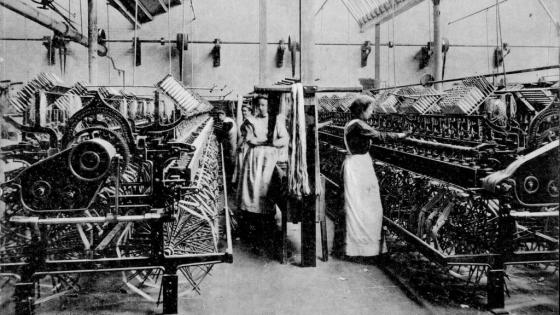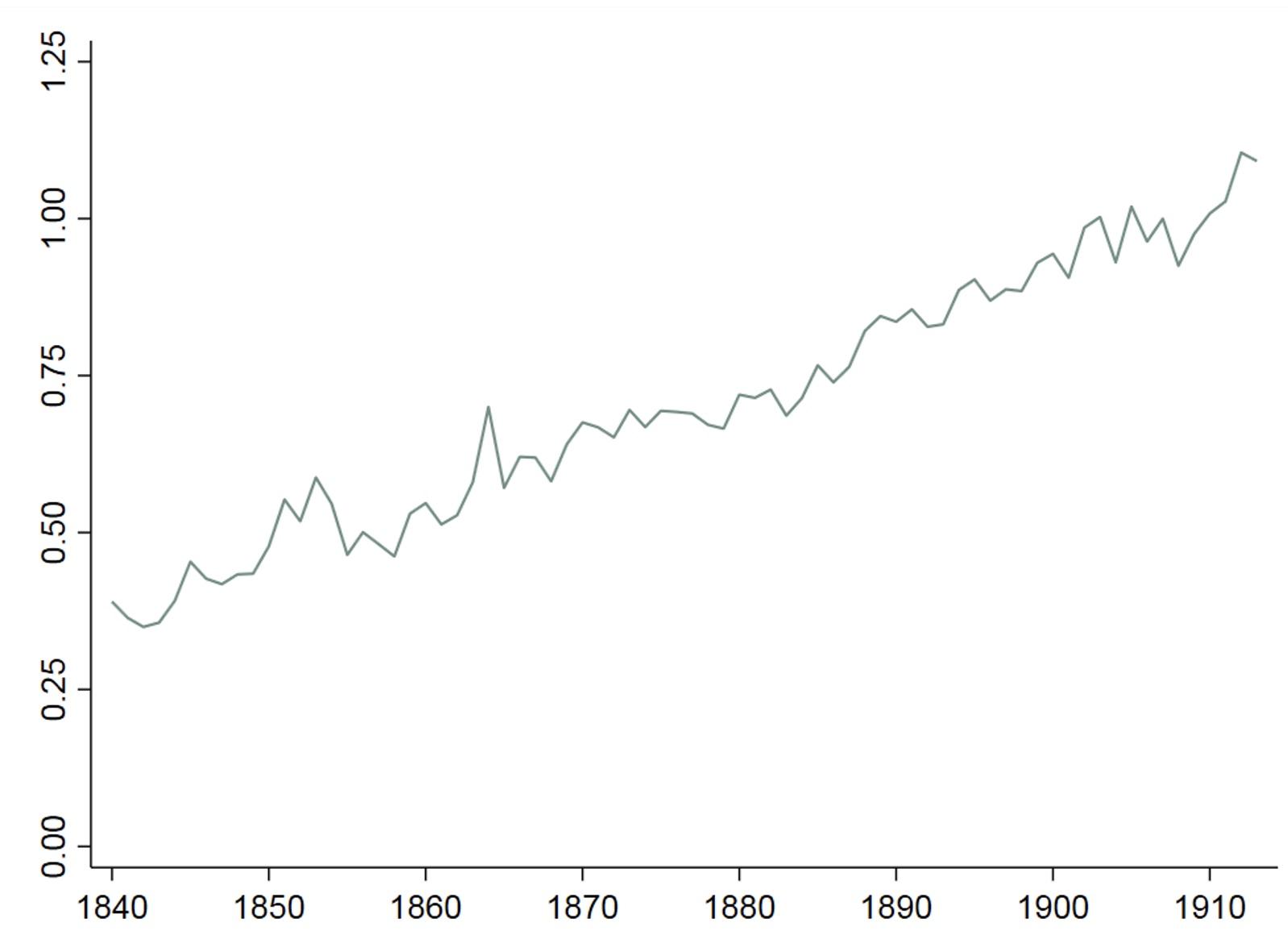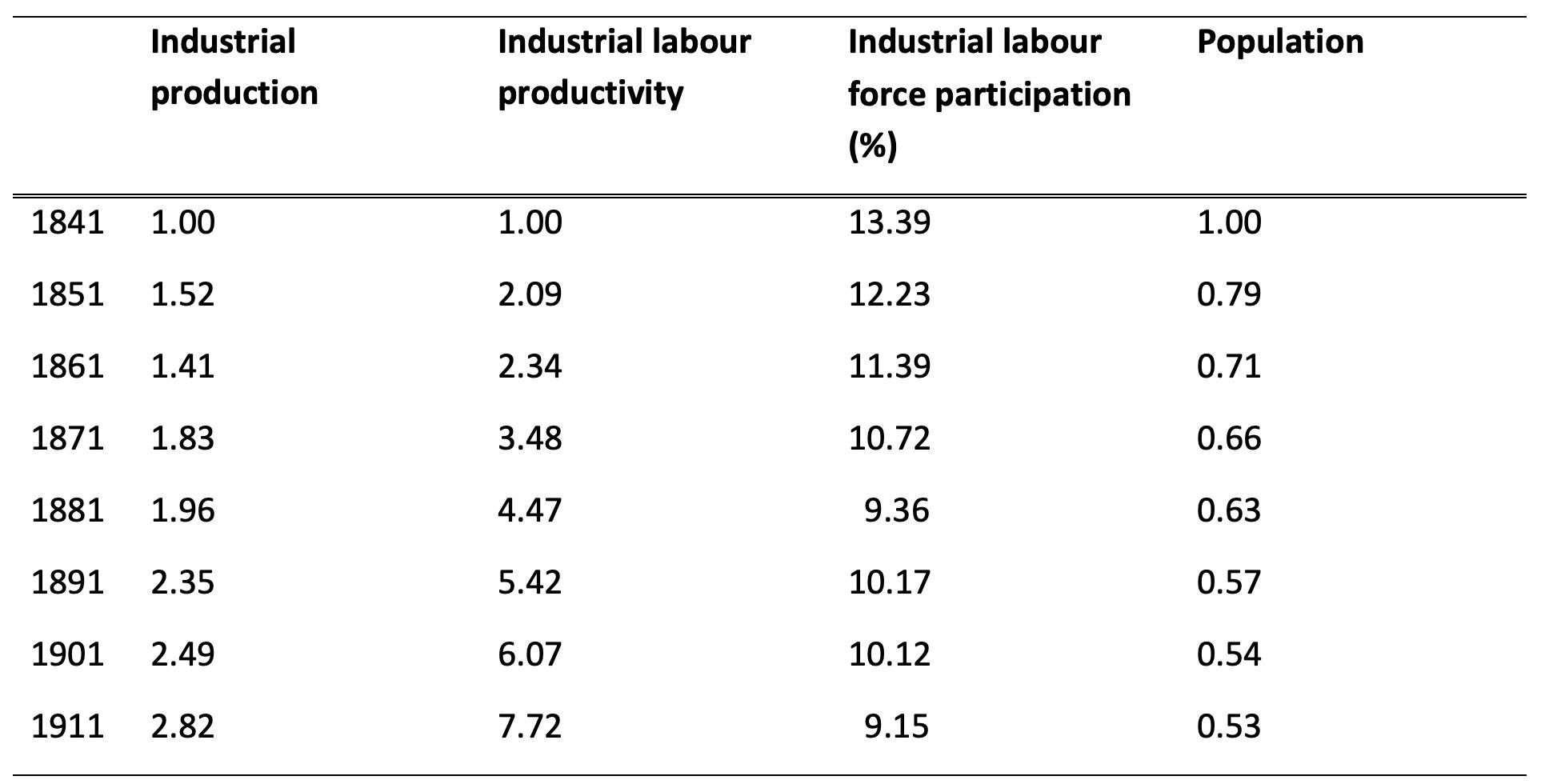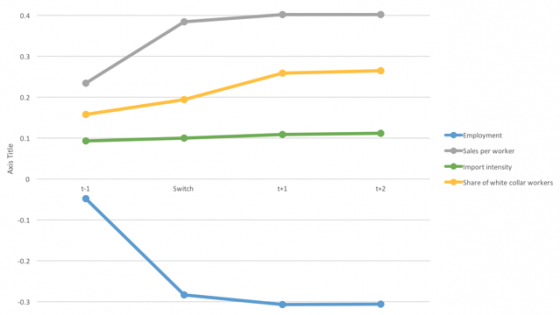A major challenge in advanced economies is the decline of manufacturing, from the fall of the old staples of textiles, iron and steel, and shipbuilding in Britain in the 1920s (Richardson 1965) to the demise of the Rust Belt in the US in the post-war era (Blanchard and Katz 1992, Alder et al. 2014). This ‘deindustrialisation’ has been associated with lost jobs, stagnant wages, and rising despair (Blanchflower 2019, Case and Deaton 2020).
An early and contentious case of deindustrialisation was in 19th-century Ireland. According to nationalists (Griffith 1918, O’Brien 1921), the union with Great Britain in 1800 exposed Irish industry to the full force of competition, resulting in a diversion of industry across the Irish Sea. Economic historians, studying a variety of evidence such as decadal returns of employment or point estimates of manufacturing output growth, have not reached a consensus on whether Ireland deindustrialised or not (Cullen 1972, Mokyr 1985, Ó Gráda 1994, Geary 1998, Bielenberg and Geary 2006).
New data
In new research, we construct a new annual index of industrial production in Ireland between 1840 and 1913 (Kenny et al. 2020). To do so, we collect data on the output of Ireland’s industries from a variety of primary and secondary sources, which we aggregate using shares of value added reported in the Final report on the First Census of Production of the United Kingdom (1907).
The index is presented in Figure 1. The results suggest that Irish industry expanded by 1.4% a year on average between 1840 and 1913, implying a 180% increase over almost 75 years. As Ireland suffered a dramatic decline in population after the Great Famine, it is important to also consider the outcome in per capita terms. On this basis, the average growth rate was 2.3% a year.
Figure 1 New annual index of Irish industrial production, 1840–1913 (1907 = 1)
Source: Kenny et al. (2020)
Decomposing growth
What accounted for the growth of industry? To answer this question, we decompose industrial production into terms measuring labour productivity, structural change, and population. The results, reported in Table 1, suggest that there was a major tailwind to industrial growth in the form of labour productivity, which rose by 3% a year on average. This should not be a surprise as Ireland was a major force in industries such as brewing, linen, and shipbuilding. Counterfactual exercises suggest that this productivity boom was due to capital accumulation and technological progress.
Table 1 Growth accounting (1841 = 1)
Source: Kenny et al. (2020)
There were, however, two significant headwinds. First, there was a decline in labour force participation, as the share of the population working in industry declined from 13.4% to 9.2%, a fall of almost a third. Second, there was a large decrease in population, which fell by 47% on account of the Famine and its aftermath.
These results have important implications for the debate on deindustrialisation. On one hand, focusing on employment suggests that industry was dwindling. On the other hand, studying output leads to the conclusion that industry was expanding. The decomposition reconciles these views. The output of Irish industry expanded despite a shrinking industrial labour force due to the productivity growth of those that remained.
International comparison
Industrial output grew from 1840 on, but does this imply that Ireland’s industrial performance was satisfactory? How does it compare in an international context? Compared to neighbouring Britain, Denmark (another small, open economy), and the US (a leader), not very well. Between 1840 and 1913, Irish industrial growth of 1.4% per annum was less than growth of 2.6% in Britain, 3.5% in Denmark, and 5.4% in the US. Expanding the peer group to 21 countries for which we have data between 1870 and 1913, Ireland is bottom of the table.
Summary
Taking stock, impressive productivity growth was dampened by structural change away from industry and population decline, which resulted in modest growth of industrial production. As other countries did not suffer from such dire population pressures, and in many cases experienced growth-enhancing structural change into industry, Ireland fared dismally by international standards.
Looking ahead, we hope this work will add to the small but growing statistical stock in Irish economic history. First, it may be possible with the data we have collected to extend the index back to the early 1800s and forward through the Great War. Second, an index of industrial production is a crucial component of GDP, for which direct estimates are missing before the 1920s (Kenny forthcoming).
There are mixed lessons from 19th century Ireland for the deindustrialisations of the future. In the short run, international competition appears to have boosted productivity, but at the expense of employment. Ireland remained a relatively poor Western European country until well into the final quarter of the twentieth century. In the very long run, however, as Ireland’s more recent experience suggests, deindustrialisation need not be the end of prosperity.
References
Alder, S, D Lagakos and L Ohanian (2014), “Competitive pressure and the decline of the Rust Belt: A macroeconomic analysis”, NBER Working Paper 20538.
Bielenberg, A, and F Geary (2006), “Growth in manufacturing output in Ireland between the Union and the Famine: Some evidence”, Explorations in Economic History 43: 110–52.
Blanchard, O J, and L F Katz (1992), “Regional evolutions”, Brookings Papers on Economic Activity 23: 1–76.
Blanchflower, D G (2019), Not working: Where have all the good jobs gone?, Princeton: Princeton University Press.
Case, A, and A Deaton (2020), Deaths of despair and the future of capitalism, Princeton: Princeton University Press.
Cullen, L M (1972), An economic history of Ireland since 1660, London: B T Batsford.
Geary, F (1998), “Deindustrialization in Ireland to 1851: Some evidence from the census”, Economic History Review LI: 512–41.
Griffith, A (1918), The resurrection of Hungary: A parallel for Ireland, Dublin: Whelan and Son.
Kenny, S (forthcoming), “Irish GDP since independence”, Lund Papers in Economic History.
Kenny, S, J Lennard and K H O’Rourke (2020), “An annual index of Irish industrial production, 1840–1913”, CEPR Discussion Paper 15375.
Mokyr, J (1985), Why Ireland starved: A quantitative and analytical history of the Irish economy, 1800–50, London: Allen and Unwin.
O’Brien, G (1921), The economic history of Ireland from the Union to the Famine, London: Longmans.
Ó Gráda, C (1994), Ireland: A new economic history 1780–1939, Oxford: Oxford University Press.
Richardson, H W (1965), “Over-commitment in Britain before 1930”, Oxford Economic Papers 17: 237–62.








